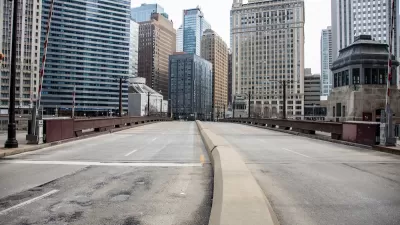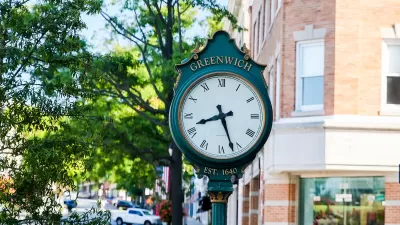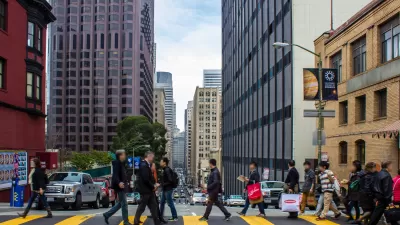Rather than ‘monofunctional’ business districts or urban playgrounds, American downtown districts could become multipurpose neighborhoods.

Writing in Wired, Amit Katwala suggests that the future of the American downtown, which has been by and large designed as “uniquely monofunctional” to serve 9-to-5 business purposes, is in not in attracting tourists with new amenities, but rather by transforming into real neighborhoods where people can live, work, and play.
As Katwala explains, “Strict zoning laws, combined with the widespread leveling of city centers in the 1960s and 1970s to build multilane highways, have created downtowns that are difficult to use for anything other than white-collar work.”
To revitalize struggling downtowns, some cities are reorienting their central business districts as “playground cities,” defined in the article as “downtown areas will be remodeled to attract leisure visitors as well as workers” but that urban scholars like Yonah Freemark warn could be a passing fad.
According to Freemark, “block-wide skyscrapers can also stifle life at ground level,” offering little interaction for pedestrians. “The park space is minimal. Roadways are horrible and extremely car-focused. All those things have to be thrown out if you want to create a neighborhood.”
Katwala writes, “Perhaps the answer to saving downtowns is actually a simple one: Transform them into neighborhoods in their own right that actually cater to the needs of the people who live there.” To start, city leaders can change policy to make it easier to convert offices and other downtown buildings to housing and other uses and reorient transit schedules to reflect post-pandemic ridership patterns.
FULL STORY: To Save Downtowns, Destroy Them

Planetizen Federal Action Tracker
A weekly monitor of how Trump’s orders and actions are impacting planners and planning in America.

San Francisco's School District Spent $105M To Build Affordable Housing for Teachers — And That's Just the Beginning
SFUSD joins a growing list of school districts using their land holdings to address housing affordability challenges faced by their own employees.

Can We Please Give Communities the Design They Deserve?
Often an afterthought, graphic design impacts everything from how we navigate a city to how we feel about it. One designer argues: the people deserve better.

The EV “Charging Divide” Plaguing Rural America
With “the deck stacked” against rural areas, will the great electric American road trip ever be a reality?

Judge Halts Brooklyn Bike Lane Removal
Lawyers must prove the city was not acting “arbitrarily, capriciously, and illegally” in ordering the hasty removal.

Engineers Gave America's Roads an Almost Failing Grade — Why Aren't We Fixing Them?
With over a trillion dollars spent on roads that are still falling apart, advocates propose a new “fix it first” framework.
Urban Design for Planners 1: Software Tools
This six-course series explores essential urban design concepts using open source software and equips planners with the tools they need to participate fully in the urban design process.
Planning for Universal Design
Learn the tools for implementing Universal Design in planning regulations.
Borough of Carlisle
Smith Gee Studio
City of Camden Redevelopment Agency
City of Astoria
Transportation Research & Education Center (TREC) at Portland State University
City of Camden Redevelopment Agency
Municipality of Princeton (NJ)





























